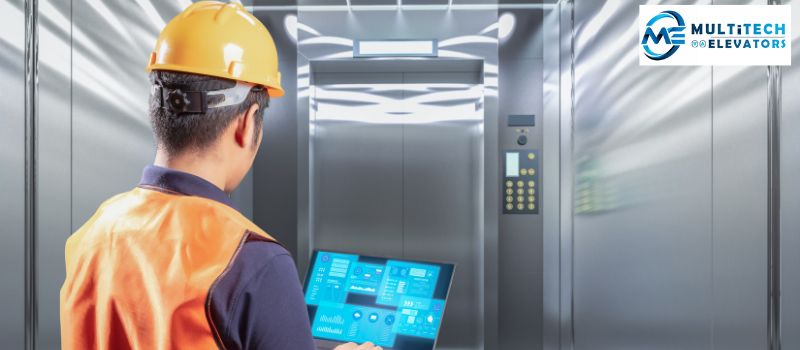Passenger Lifts and Residential Elevators – Understanding the Key Differences

Passenger lifts and residential elevators serve distinct purposes in vertical transportation, catering to different settings and user needs. Understanding their differences is crucial for making informed decisions in construction and building management.
Definition and Purpose
Passenger Lifts: Passenger lifts, also known as commercial lifts, are designed primarily for public or commercial buildings where they serve a large number of people throughout the day. These lifts are built to handle high traffic volumes efficiently, ensuring smooth transportation between various floors. They are integral to the functionality and accessibility of buildings like hotels, offices, shopping malls, and hospitals.
Residential Elevators: Residential elevators, on the other hand, are specifically installed in homes to provide convenient vertical transportation for residents. Unlike passenger lifts, which prioritize capacity and frequent use, residential elevators focus on enhancing accessibility and comfort within private residences. They are often customized to blend seamlessly with home interiors and cater to specific mobility needs of homeowners.
Design and Features
Passenger Lifts:
- Capacity and Size: Passenger lifts are typically larger in size and have higher weight capacities compared to residential elevators. They are designed to accommodate a significant number of people or heavy loads, ensuring efficient transportation during peak hours.
- Speed and Efficiency: These lifts are engineered for speed and efficiency, capable of quickly transporting passengers between multiple floors in commercial buildings.
- Safety and Accessibility: Safety features such as emergency alarms, fire-resistant materials, and accessibility options for differently-abled individuals are standard in passenger lifts to comply with building regulations.
Residential Elevators:
- Customization and Aesthetics: Residential elevators prioritize aesthetics and customization options to complement the interior design of homes. They come in various finishes, materials, and styles to blend seamlessly with residential décor.
- Space Efficiency: While they may have smaller capacities compared to passenger lifts, residential elevators are designed to optimize space within homes without compromising on functionality.
- Quiet Operation: Quiet operation is a key feature of residential elevators, ensuring minimal disturbance to occupants during use.
- Accessibility and Convenience: These elevators often include features such as user-friendly controls, automatic doors, and safety sensors tailored to residential settings.
Installation and Maintenance
Passenger Lifts:
- Installation of passenger lifts involves detailed planning and compliance with building codes and regulations specific to commercial properties.
- Maintenance is typically scheduled more frequently due to higher usage and stringent safety requirements.
Residential Elevators:
- Residential elevators require careful consideration during installation to integrate seamlessly with the home structure and meet safety standards applicable to residential settings.
- Maintenance schedules are designed to ensure long-term reliability and safety, though they may be less frequent compared to commercial lifts.
Cost Considerations
Passenger Lifts:
- Installation and maintenance costs for passenger lifts are generally higher due to their size, capacity, and specialized requirements for commercial use.
- Operational costs may also be significant, considering the energy consumption required for frequent use in commercial settings.
Residential Elevators:
- While initial installation costs for residential elevators can vary based on customization and features, they generally require less investment compared to passenger lifts.
- Operational costs are typically lower due to less frequent use and smaller size, resulting in lower energy consumption.
Conclusion
In conclusion, while both passenger lifts and residential elevators serve the fundamental purpose of vertical transportation, their designs, features, and applications are tailored to distinct environments and user needs. Understanding these differences is essential for architects, builders, and homeowners alike to make informed decisions regarding vertical mobility solutions that best suit their specific requirements and operational contexts.

 Virginia Business Blueprint: How to Kickstart Your Entrepreneurial Journey
Virginia Business Blueprint: How to Kickstart Your Entrepreneurial Journey  The Role of Udyam Registration in Atmanirbhar Bharat Abhiyan
The Role of Udyam Registration in Atmanirbhar Bharat Abhiyan  Mango Costs in Pakistan 2024: A Total Diagram
Mango Costs in Pakistan 2024: A Total Diagram  Why Professional Power Management Can Make or Break Your Event
Why Professional Power Management Can Make or Break Your Event  Experience The Thrill Of Zipline Dubai With Captain Dunes
Experience The Thrill Of Zipline Dubai With Captain Dunes  Exploring London’s Best Butcher Shops
Exploring London’s Best Butcher Shops  Enhance Your Shop Appeal with Sydney’s Best Carpentry Services
Enhance Your Shop Appeal with Sydney’s Best Carpentry Services  A Detailed Look at the Features of the LEGO Technic Mars Crew Exploration Rover
A Detailed Look at the Features of the LEGO Technic Mars Crew Exploration Rover